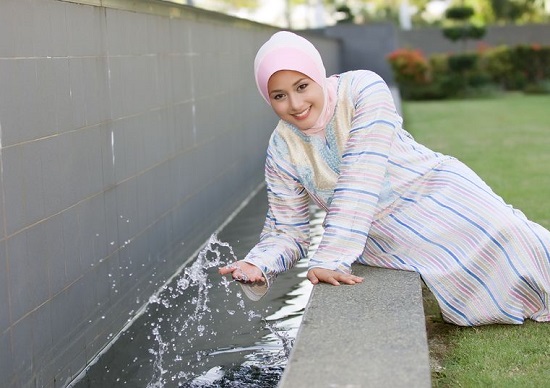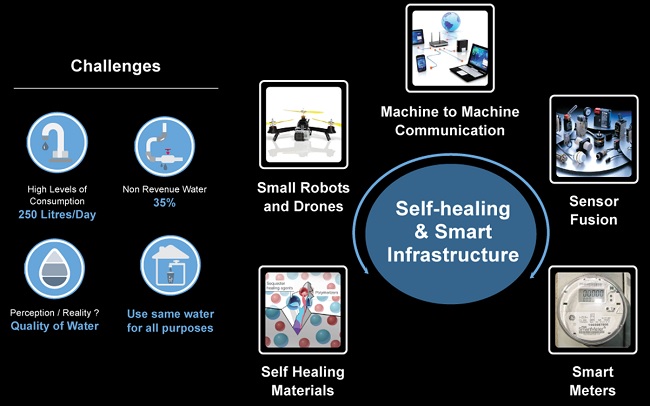Tech Vision: If Steve Jobs were Malaysia’s water minister …
By Manoj Menon July 9, 2015
- Consumption and wastage of water above average in Malaysia
- Convergence of both technologies and organisations can help
 IN the last five years, Malaysia has made significant progress in enhancing rural water supply coverage. Whilst this is a good achievement, there are many other challenges that we face in this country today.
IN the last five years, Malaysia has made significant progress in enhancing rural water supply coverage. Whilst this is a good achievement, there are many other challenges that we face in this country today.
Despite the abundant availability of water resources, Malaysia had a severe water crisis in 2014. Some of the key water challenges facing the country are listed below:
1) High water consumption/ wastage
Malaysians use an average of 250 litres of water every day, which is the highest consumption rate in South-East Asia. As we aspire to reach a developed economy status, this needs to be brought down to 165 litres per day.
2) Non-Revenue Water (NRW)

This is water that is produced and is lost before it reaches the customer. The most commonly used indicator to benchmark NRW is the percentage of NRW as a share of total water produced.
The losses are usually due to two main reasons:
- Real losses because of pipe breaks and leaks, storage reservoirs overflow, etc. Leaks can go un-noticed for months or even years.
- Commercial losses because of meter under-registration, illegal use including fraudulent and unregistered connections.
Neighbouring Singapore has NRW in total of 5%, which is best in class globally. Malaysia, on the other hand, is at 35%.
The World Bank recommends that NRW should be less than 25%. We clearly have some work cut out for ourselves.
3) Water quality
Given that distribution leakages exist in the system, there is a high degree of concern amongst consumers on the quality of water.
Consumers perceive that while pipe cleaning mechanisms and schedules are in place, they are not implemented regularly to avoid risking disruption of water supply.
As a result, consumers are wary of drinking water straight from the taps. This has fuelled the demand from consumers to install filtration systems in their homes.
We are duplicating spend on water filtration, which is being done both by the utility and at the Point of Use by the consumer.
4) Same water for every use
This is a global challenge. The water that we get at home is treated for quality such that it is potable. Only about 55% of domestic consumption is for shower and drinking/ cooking purposes; the rest is for general washing including gardening, flushing cisterns, and laundry.
We can be more efficient in our usage of resources if we can have different sources of water for different purposes.
Working like Jobs

There are some exciting innovations in technology which can play an important role in addressing these challenges.
We thought it will be a great idea to see it from the lens of the visionary Steve Jobs, the late chief executive officer of Apple Inc, on how he would have leveraged innovative technologies to solve these challenges.
- Sensor fusion: The use of a variety of sensors which can capture video, pictures, motion, change in heat, pressure and sound to look for any abnormality or change. The combination of use of these sensors can help pinpoint the problem area with a great deal of accuracy. We are also seeing the development of disposable low-cost sensors which can be transmitted across the water pipes to relay information about the properties of the water.
- Machine-to-Machine communication: Wireless technologies can help proactively monitor and send the information from the sensors onto a cloud. This can then be analysed with the use of software tools to develop visualisation maps on the quality and quantity of water flow across the system.
- Small robots and drones: Small robots or drones (size ranging from millimetres to centimetres) with requisite sensors can be programmed and sent along the water pipeline to look, record and capture essential information. Special purpose robots can be designed; whose only function will be to traverse the length and breadth of the pipelines in the country and proactively help address the issues that are detected. Over a period of time, these robots can start picking information even before leaks happen. They can look for corroding pipes and polluted water source in pipes. They could also help fix issues without the need for digging of roads or replacement of pipes.
- Self-healing polymer coatings: There is great progress being made in the development of self-healing coatings that automatically heal themselves and prevent corrosion in hard to reach places where replacing hardware or repairing surfaces is a major undertaking. These coatings could be applied on joints, sections of pipes that are prone to corrosion or breaks. Current technology in self-healing coatings is limited to very small cracks and has single time self-healing property. When used in conjunction with small robots or drones, along with sensors, we can magnify the scale and impact of the use of this technology.
- Smart meters: The pricing for water in Malaysia is quite low and this is not a deterrent for managing water consumption at the consumer level. The biggest challenge is that the average consumer is also not at all aware about the household water consumption levels. He possibly has never checked his water meter readings. We need a better mechanism to educate and raise awareness. Smart meters integrated with mobile phone apps can help provide the much needed real time usage trends. However, these technologies are expensive to implement and a return on investment (ROI) will be difficult to justify.
 If the smart meters were to provide information on water quality instead of just quantity of water consumption, we may have a winner on our hands.
If the smart meters were to provide information on water quality instead of just quantity of water consumption, we may have a winner on our hands.
This would also force the utility companies to take quicker corrective action in the event of leaks, corrosion of pipes, etc. To begin with, this can be done at the community/ building/ neighbourhood levels, and gradually be extended to homes.
Achieving a developed nation status is not just about the economics. We also have to be responsible global citizens.
The convergence between emerging technologies is what helped Steve Jobs launch the revolutionary iPhone with its touch interface.
In addition to the convergence between the technologies mentioned above, we would need a convergence between the institutions – ranging from national research and development centres to various government agencies – to help realise this vision for Malaysia.
Manoj Menon is senior partner and Asia Pacific managing director at Frost & Sullivan. Melvin Leong and Sapan Agarwal also contributed to this article.
Previous Instalments:
Tech Vision: The emerging world of bricks and clicks
Tech Vision: Innovating to zero diabetes
Tech Vision: Innovating to zero crime
Tech Vision: Technology and improving the response to floods
For more technology news and the latest updates, follow us on Twitter, LinkedIn or Like us on Facebook.


